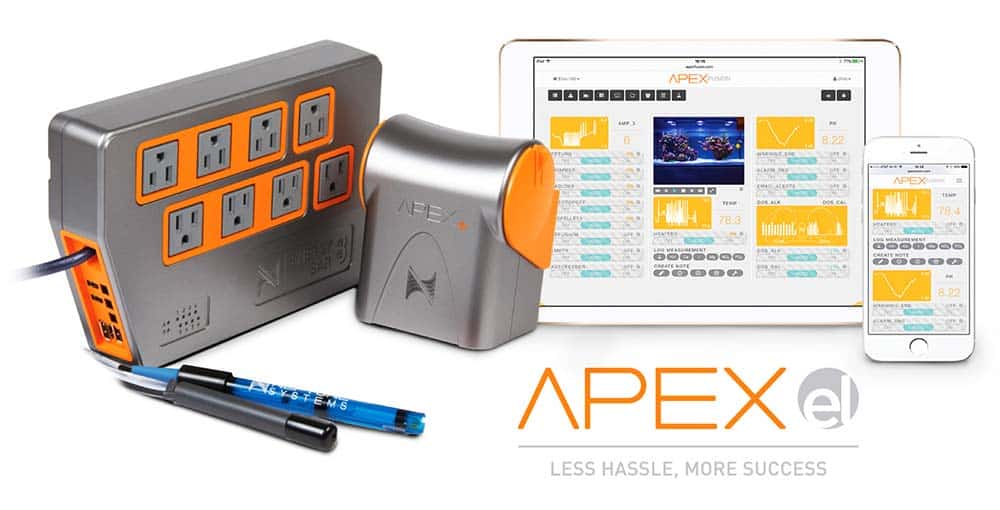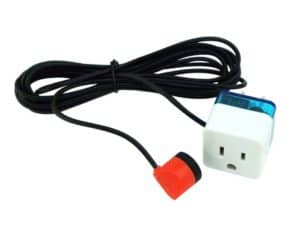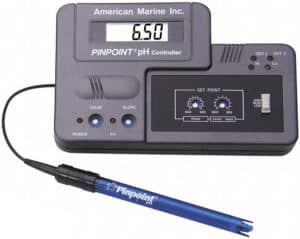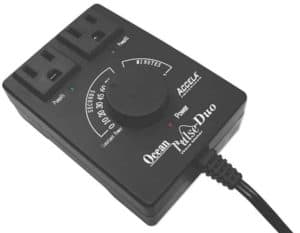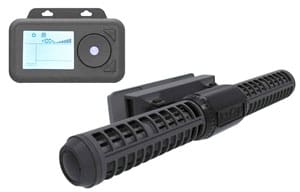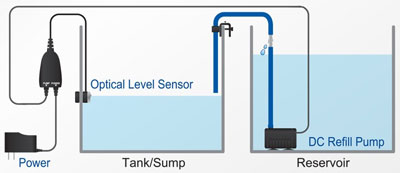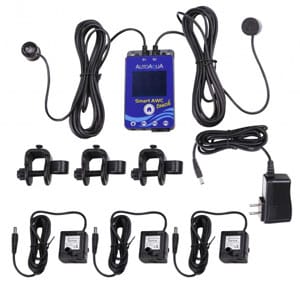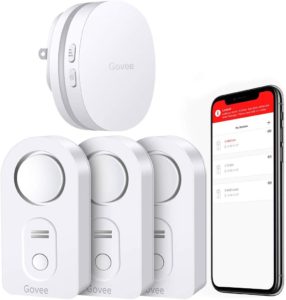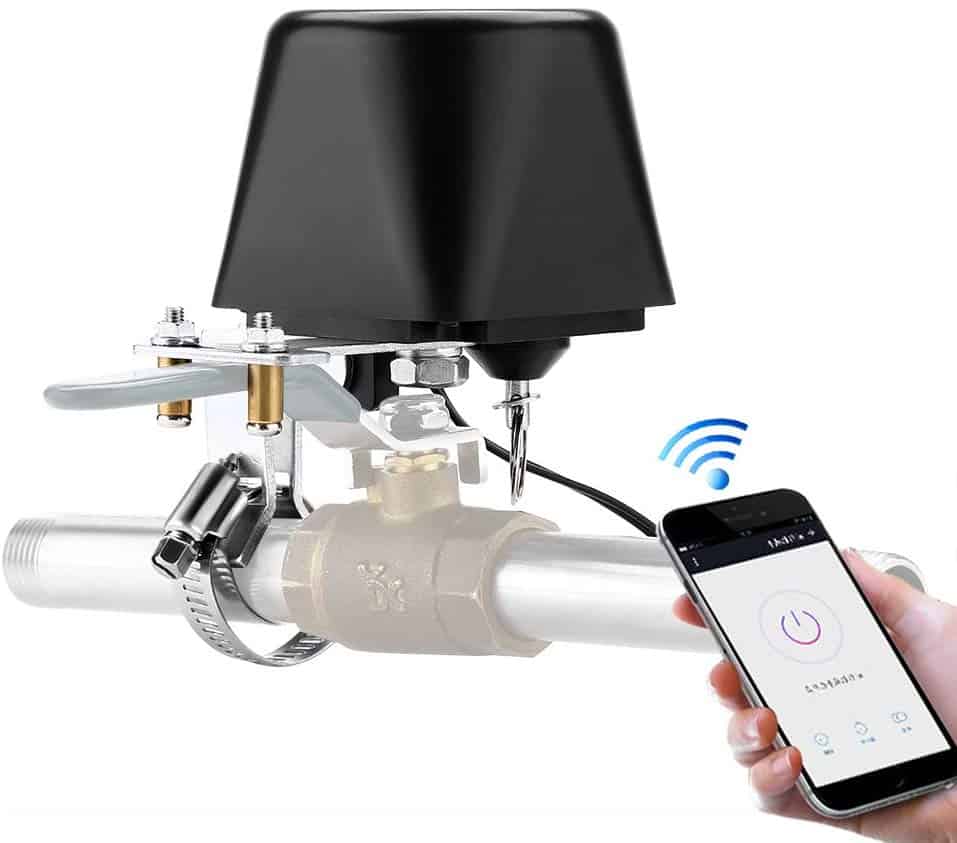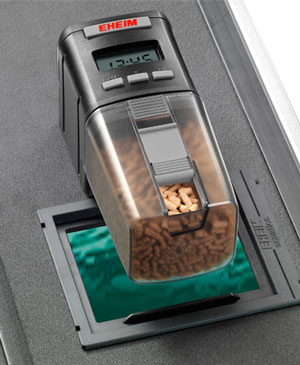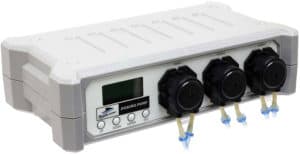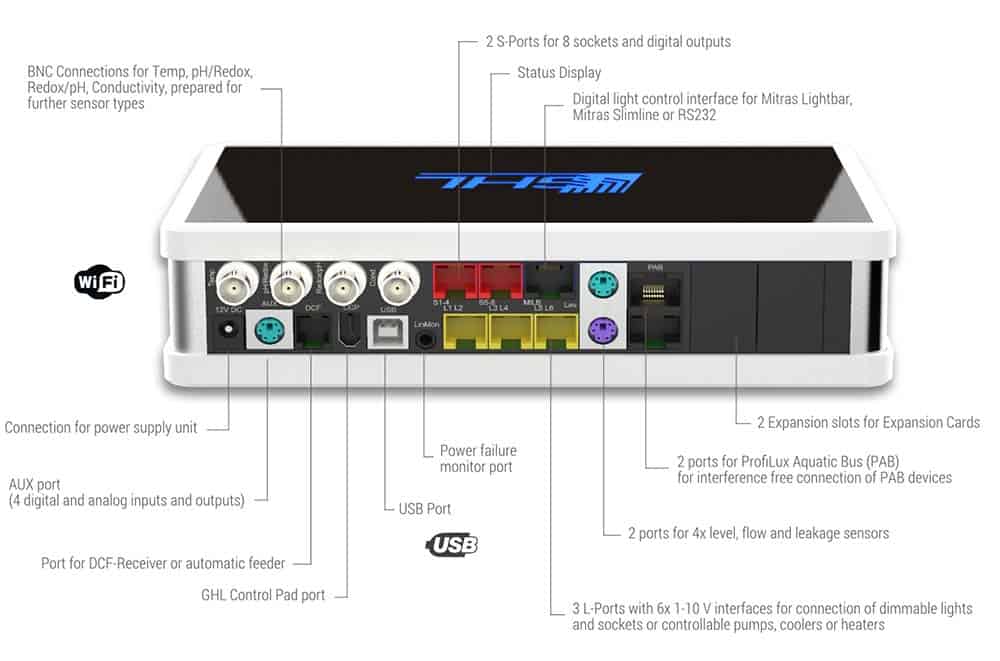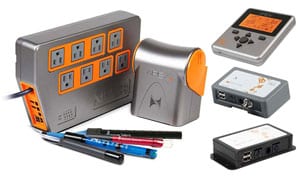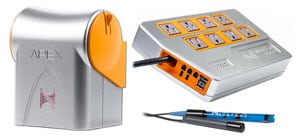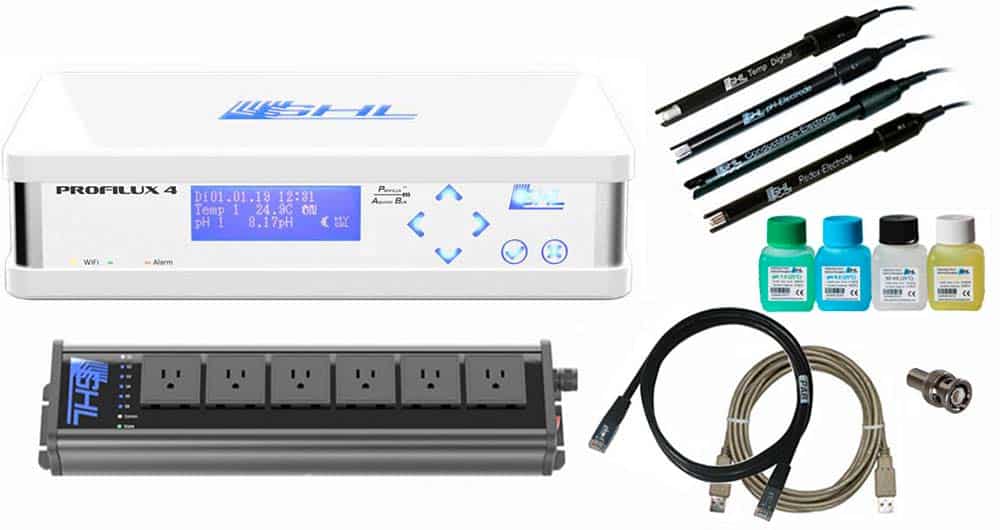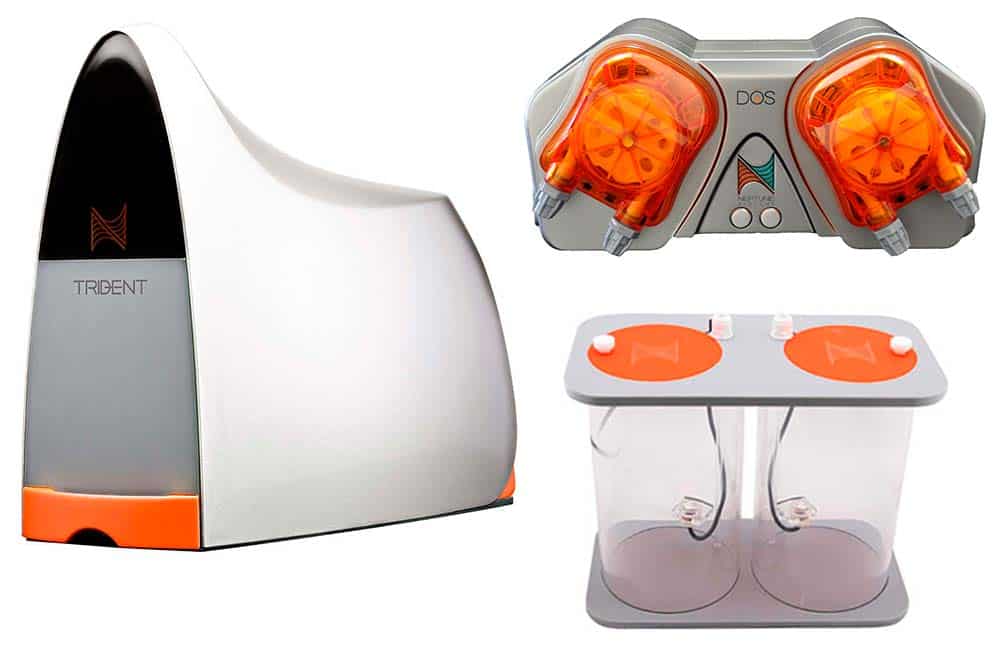Aquariums are time-consuming, especially saltwater! Maintaining water parameters as best you can lead to stability which leads to a healthier tank, but the amount of time we spend tending to our aquarium soon adds up.
In today’s world, we are busier than ever, we travel more and the coral we keep requires the most stable water parameters you can reach. But without a little help, we are tied to our aquariums. A trip of a day or two can be accomplished without any major fuss, but to go away for 2 weeks needs help.
This is where Aquariums Controllers come in.
An Aquarium Controller is a device that automatically looks after a task or piece of equipment on your aquarium. They can be simple devices or complex, multifunction controllers that not only automatically monitor & control, but can alert you via text or email when your attention is required.
I would never own an aquarium without a controller as they bring so much help and peace of mind. I am lucky enough to have the knowledge to build my own DIY controller, but there are many great devices on the market to enable any aquarist to automate their aquarium.
For those of you with electronic and DIY experience, there is a ton of information and projects on Google to help you build your own step-by-step, but for the rest of you, there are some great controllers available for purchase ranging from under $10 to +$1000.
This is not an in-depth review of every aquarium controller, but more of an overview of what types of controllers there are. Read on to find out all about them and how to select one to best suit you…
Who Are Aquarium Controllers For?
In short, every aquarium can benefit from some form of automation. The first pieces of automation many aquarists use are a timer to automate the ON/OFF times of their lights.
If you are an owner that travels a lot or runs a busy lifestyle then one of the more feature-rich aquarium controllers is going to be best suited to you.
Pretty much most tasks within the aquarium have been automated in some form or another. Some have been DIY and some have gone into mainstream production.
The level of help you need on your aquarium can be started with just a basic aquarium controller like the Neptune Systems Apex Controller which then provides you with a load of additional add-ons that you can purchase and install over time.
Are There Many Types of Aquarium Controller?
There are many types of control devices on the market today and this section is going to introduce you to what can be done by these great little devices.
Most Basic Controllers
Mechanical Timer – Used as the simplest and most basic controllers. Mainly used to control simple light fixtures that just require power to turn them on and off. The only downside to mechanical timers is they need to be reset or adjusted after a power failure.
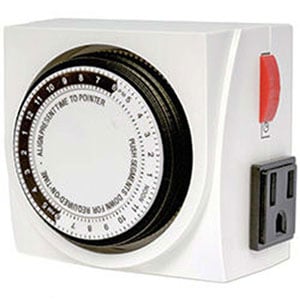
Available Here at Amazon.com
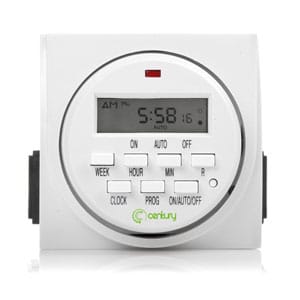
Available Here at Amazon.com
Digital Timer – An improved version of the mechanical timer allowing for more precise control, usually down to the minute rather than 15 minute segment as with most mechanical times. The other bonus to digital timers is you can set different programs for each day and they are not affected by power outages due to their onboard battery.
Dedicated Function Controllers
This is the type of controller that most aquarists start their aquarium automation with. They can be affordable, great time-savers and also life-savers!
Temperature Control
Although not as common now with modern electronic heaters, but a malfunctioning heater can quickly kill your entire aquarium. By failing OFF it will prevent your aquarium from maintaining temperature.
But far worse is the heater sticking in the ON position and causing the oxygen in the water to be reduced and cooking your livestock!
Some of these controllers can also work with aquarium chillers too and prevent them from sticking ON and cooling the water too much.
These controllers will have their own temperature sensor that you place in the water. Once the water temperature rises or drops below a selected setpoint it will automatically remove power to the device.
These devices will not inform you that they have been activated so oversight is required.
Some of the best Temperature Controllers are:
(All Links to Amazon.com)
Ph Control
To most beginners, this is a controller that will not be required for some time, if at all. This controller monitors Ph levels in the water and displays the current value as well as being able to control 110V AC equipment.
The big player in this market is the Pinpoint Ph Controller from American Marine.
This device is mainly used in conjunction with Calcium Reactors to control the flow of water through the reactor and out to the display tank. Calcium Reactors are used on coral-heavy aquariums where the demand for Calcium and Alkalinity out-consume the supply from water changes.
This is a Set-&-Forget controller with a great pedigree & reviews.
Click Here for more information at Amazon.com
Light Control
As lights become more and more advanced, the control they require also advances. Apart from the Plug-In-Timers mentioned earlier to control the simple fixtures, most of the high-end LED fixtures are controlled via three main ways:
- Built-in WiFi capability with a manufacturer-specific app that allows the user to set and control all the functions. Aqua Illumination is a good example of this with its Prime HD & Hydra HD series LED fixtures.
- A manufacturer-specific light controller that plugs into the light/s to allow for set up and control via a home computer, internet-based user interface, or smartphone app. Kessil & Maxspect use this platform.
- The light fixtures use a 0-10V control protocol or a digital signal to be controlled via one of the Multifunction Controllers detailed later in this article.
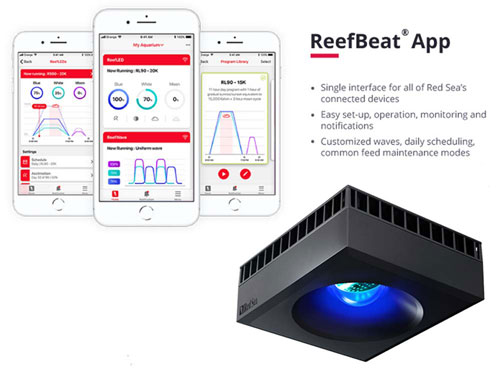
When purchasing an LED light fixture research into its control is required as an additional lighting controller could easily add another +$100 to your bill.
For T5 or Metal Halide light fixtures, these just require the usual ON/OFF functions. Some modern T5 fixtures can be dimmed to create Sunrise and Sunsets and these will either feature built-in controls or can be controlled via a Multifunction Controller.
Pump Control
There are two types of pumps used in aquariums. AC pumps and DC Pumps.
AC pumps are just the regular ‘Plug-Into-Wall’ type and they run at a set speed until they are unplugged.
DC pumps are plugged into a controller which allows them to control the speed at which they run, their duration and different wave-making modes.
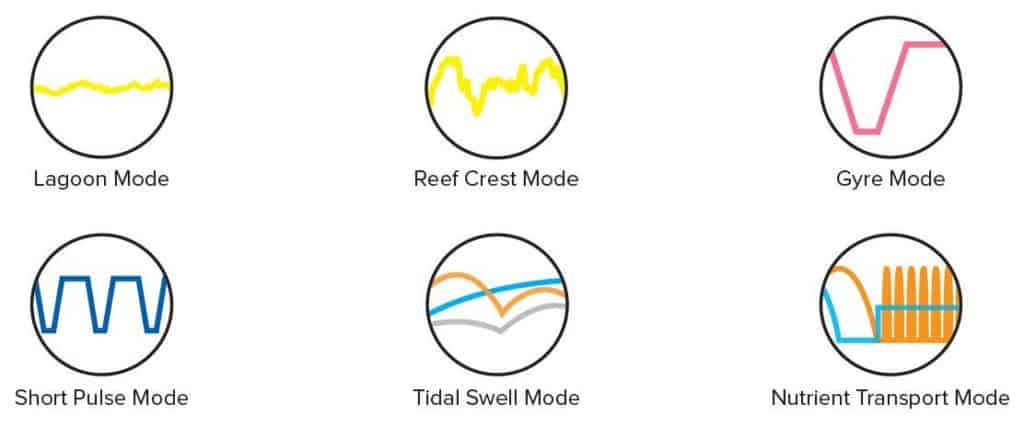
To control AC pumps, especially to create waves or random flow motions you can purchase a nice little device that can flip-flop two circulating pumps/powerheads connected to it.
The JBJ Ocean Pulse-Duo controller is perfect for your first wavemaker setup.
Find it Here at Amazon.com
For DC-controlled pumps they are almost identical to the light fixtures above. They either come with their own controller or can be controlled by a Multifunction Controller.
For more information on flow pumps with their controllers, you can view them Here at Amazon.com
Evaporation Control
The water in your aquarium is warm and no matter what your aquarium is going to evaporate water, every day. My 90 gallon system evaporates over 1 gallon per day and without some form of electronic help, I would be adding a jug-full every day!
This is not so bad but if you have a larger aquarium or running high-temperature lights like metal halides, you could be into the gallons per day. This now starts to become a problem, especially if you want/need to spend some time away from home.
To ‘top-off’ for evaporation loss, you need to add the same amount of FRESHWATER to your aquarium as it loses. You ONLY top-off with freshwater as salt does not evaporate.
After adding a timer to your lights this is by far the most popular first real piece of automation almost every saltwater aquarium owner will install.
The device is called an Automatic Top-Off System, commonly known by ATO for short.
These devices use a sensor to monitor the water level, when it senses a drop due to evaporation it turns on a small pump in a container of freshwater and refills the aquarium until its back at the correct water level. It is a Set-&-Forget system, all you have to do is keep the freshwater container filled.
Most aquarists use an old 5 gallon salt bucket that will last them many days, if not weeks if your tank is small.
For a great selection of ATO systems, you can view them Here at Amazon.com
Water Change Control
This is one of the ‘Holy Grail’ processes most aquarium owners wish to have and only some are lucky enough to have space to set up such a system. I designed this feature into my own DIY Multifunction Controller and all I have to do is press a button to do a water change. I can tell you its one of the best features you can ever have!
There are a few devices on the market to automatically change water. You have to have a vessel of ready-made saltwater and a drain close by so the controller can remove X amount of water and replace it with X amount of new water, but it’s fully automated.
The Smart AWC from Auto Aqua is the main device currently on the market and it is getting great reviews. For just over $300 this system could really help relieve you of one of the most laborious chores.
For a detailed look into how this system works Click Here to go to Amazon.com
Flood Control
One of the greatest fears most aquarists have is the thought of a flood! There is no doubt that with the amount of water we use and the frequency at which we use it that it is only a matter of time before something fails and we leak water.
If you live in an apartment or condo and you have people living below you the consequences of a flood could financially ruin you if you are not covered!
Luckily there are some great stand-alone devices that can really help you minimize any flood damage.
Sensing:
This pack of flood sensors is a great way to get notified if they detect water. You can place them in convenient locations and if they detect water you instantly get notified via email or on your smartphone.
You can find them Here at Amazon.com for around $50.00 for a 3-Pack.
Control:
To add the next level of damage control you can buy this Automatic Valve Turner that you can operate from your smartphone.
Just easily install over either your main property water line valve or the valve feeding your aquarium area and you can instantly operate it when notified by the sensors above.
Water Level Control
As you are researching into this great hobby you may have read how countless people flood their home when filling up their container to do a water change! I’m amazed at how often this happens!
Even the most diligent owner can get distracted and the first thing you know your partner has wet socks and steam is coming out of their ears!
Luckily there is a great device available nick-named ‘The Marriage Saver’ and for good reason! This simple device has a sensor that you put on the container and when it senses the water level it shuts off the water! Simple but very effective!
For $70 this controller will pay for itself many times over! You can find it Here at Amazon.com.
Feeding Control
Are you planning on going on vacation or do you have active fish like Anthia’s that need several small feedings every day? Unless you are based from home and hand-feeding you are going to need a device to help you.
Automatic feeders are not a new thing but they can really help and they are super cheap! Many aquarists are now permanently installing them on their aquariums to feed smaller portions more often to ensure all their livestock have a chance to eat.
One of the most popular brands of automatic feeder is Eheim. They have been leading the market for a long time and their accurate dosing mechanisms ensure the same amount is fed every time.
You can view a nice selection of Auto Feeders Here at Amazon.com.
Dosing Control
There will be a time in your aquatic journey when you will need to begin supplementing your aquarium. Supplementing is the addition of chemical elements that your corals are consuming faster than you can supply with water changes alone.
The other scenario for supplementing is feeding of liquid foods, sometimes at night when your corals are actively feeding. Unless you want to get up at 1am, a Dosing System will be required.
Just like most of the devices above, many of the Multifunction Controllers have add-ons that complete all these tasks but you can also buy stand-alone dosing units that have their own built-in controllers to dose as and when you need.
The dosing systems come in a variety of configurations and generally start around a few hundred dollars, but the stability they provide to your water when your corals get demanding is second to none.
You will be able to manually dose Calcium, Alkalinity and Magnesium for only so long before you cave and purchase yourself a dosing system! Then you will wonder why you waited so long!
You can view more details and see a good selection of Dosing Systems Here at Amazon.com
Multifunction Controllers
Now we have got to the section where the Big Guns are released. Multifunction Aquarium Controllers have revolutionized our hobby and the versatility they bring is outstanding.
Not only do these controllers watch over every parameter you have a sensor for but they can control every item connected to them and allow you to alter settings and see in real-time exactly what is going on in your aquarium from anywhere in the world.
One of the main advantages to these Multifunction Controllers is that they can perform programmed tasks when they sense a problem and let you know what has happened and how it has been resolved.
For Example:
The controller is sensing your water is getting too hot:
- It can turn off power to the heater
- It can turn off your lights
- It can turn on cooling fans to blow across the water surface
- It can let you know it’s done all this
- When the water temp returns to normal it resets everything
This is just one of a thousand functions you can program your aquarium controller to do and with the Add-On Modules you can purchase, you can keep adding to and improving your automated system over time.
Here is a video describing the Neptune Systems Apex Aquarium Controller:
Here is just a brief list of some of the functions you can expect from Multifunction Controllers:
Monitoring
- Temperature
- Salinity
- Ph
- ORP
- PAR
- Flow Rate
- Water Level
- Evaporation
- Water Sampling
- Flood Detection
Control
- Plug-In Equipment
- Lighting
- Return Pumps
- Wavemakers
- Dosing Pumps
- Solenoid Valves
- Media Reactors
- Cooling Fans
- Feeding Devices
- Heaters/Chillers
- Water Change Pumps
Interfacing
- Text Message
- App Notifications
- Wifi
- Web Access
- Apple & Android Apps
- Live Web Cam Streams
As well as constantly monitoring and controlling here could be a typical setup routine for a single day:
| Time | Lights | Wavemakers | AutoFeeder | Dosing |
| 0900 | On 5% | 50% Lagoon | Feed | 2ml CAL |
| 1000 | 10% | 80% Gyre | 2ml ALK | |
| 1100 | 20% | 100% Gyre | 2ml CAL | |
| 1200 | 50% | 100% Gyre | 2ml ALK | |
| 1300 | 80% | 100% Gyre | 2ml CAL | |
| 1400 | 100% | 100% Gyre | Feed | 2ml ALK |
| 1500 | 100% | 100% Gyre | 2ml CAL | |
| 1600 | 90% | 100% Gyre | 2ml ALK | |
| 1700 | 80% | 100% Gyre | 2ml CAL | |
| 1800 | 70% | 100% Gyre | 2ml ALK | |
| 1900 | 50% | 100% Gyre | Feed | 2ml CAL |
| 2000 | 30% | 80% Nutrient | 2ml ALK | |
| 2100 | 10% | 70% Lagoon | 2ml CAL | |
| 2200 | Moonlight | 50% Lagoon | 2ml ALK | |
| 2300 | Off | 50% Lagoon | 2ml CAL |
The list of functions you can have is truly endless. Another great feature with these controllers is you can buy an I/O (Input/Output) Module that allows you to build your own electronic gadgets and toys and have them controlled by the Multifunction Controllers.
I know one aquarist who made a level sensor to monitor the collection cup on his Protein Skimmer. When the cup gets full it signals to the aquarium controller it’s ‘Full’, it then operates a solenoid valve to drain the collection cup. He also added some simple code to say that if it does this more than once every 10 minutes it alerts him that his Protein Skimmer is overflowing and needs attention!
Many people get nervous when thinking about adding a multifunction controller suspecting they are not ‘Techie’ enough, but they are designed to be so simple to set up. But, if you want to get into playing and coding it has the functionality to do that.
There are multiple forums on the web dedicated to installing, setting up and programming any function you wish for each brand of controller. You can guarantee that what you want to do has probably been accomplished beforehand and someone will be willing to help. (See the links below)
There Are Two Main Brands That Compete In The Multifunction Controller Market:
Neptune Systems Apex
By far the most popular aquarium controller on the market. The Apex comes in a range of bundles to suit every aquarium and budget.
The range of Add-On Modules allows you to totally customize your setup.
This US-based company works in collaboration with some of the biggest aquarium product manufacturers to allow companies products to be controlled by the Apex system. Be sure to look for the ‘Apex Ready’ logo to ensure a product can be seamlessly integrated into the Apex.
Be sure to also check out the Neptune Systems Apex Support Forum
GHL Profilux
The Profilux from GHL is an ongoing evolution of their original aquarium controller. Competing head-to-head with the Apex is a tough task but this controller gives it a good run for its money.
Although not as popular, the Profilux also has a range of Add-On Modules allowing it to be expanded and customized to meet your requirements.
Made in Germany, the Profilux is designed, built and tested to the highest standards of quality making this a reliable GateKeeper for any aquarium.
From $519.90
For More Information Reviews & Details Click Here to go to AquariumSpecialty.com
What Are The Benefits Of An Aquarium Controller?
I hope you are now starting to see how much of a great benefit any kind of controller can have for both you and your aquarium. Whether you decide to implement just a few of the Dedicated Controllers or bite the bullet and install a Multifunction Controller, you will not be sorry!
As aquarists, our job is not to keep livestock, but to keep water. If you can keep your water stable then you will have no problem keeping the fish and corals you desire.
By installing an Aquarium Controller you are well on the way to that stability.
What Should Be Automated First On An Aquarium?
However you can make your life easier with your aquarium, the better your experience will be. Some of you may be wary about giving up control of your aquarium to a computer but there are a few things that are relatively cheap that you can automate that will make your life easier and provide a little bit more stability in your reef.
Here are 3 of the first things I recommend you automate to start with:
Lighting – If you have a basic light system the easiest thing you can do is plug your lights into a timer or timers to let that turn them on and off each day. This way your lights don’t get left on to fuel algae growth and it allows your fish to sleep and your corals to follow their natural daily cycle, just like humans.
Feeding – If you have space I recommend you install an Automatic Feeder. This allows you to feed small amounts multiple times a day to ensure everyone gets fed and it is easier for your filters to remove any uneaten food. This also helps when you are away from home.
Evaporation – Your tank is going to evaporate water every day. Mine evaporates over 1 gallon a day. To be replacing this FRESHWATER ONLY every day would be a real pain. If you let your evaporation go for a few days your salinity will increase. In a small aquarium, this could be fatal.
By Installing an Automatic Top-Off System you can get some freedom.
How Do You Select An Aquarium Controller?
When it comes to selecting an Aquarium controller there are many questions to answer. Here are a few that may help you narrow down your search:
What Processes/Equipment Do You Want to Automate?
Are you needing to automate a single task to help you or are you needing multiple functions because your new job is going have you traveling a lot?
What Parameters Do You Want Controlling?
Are you looking at upgrading from manual dosing and are looking to install a Dosing Pump System or a Calcium Reactor that needs Ph control?
Do you live in an area where your summers get super hot and last summer almost cooked your aquarium?
What Notifications Do You Want?
Are you wanting a controller that can just do its thing and you don’t have to worry about it or do you want a controller that can monitor everything and then alert you so you can take action before it becomes a problem?
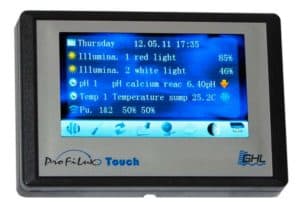
Do You Have Other Equipment To Control?
Have you just bought a new set of lights and you need to purchase an additional light controller to get the full benefit from them? Would a better option be to spend a few more dollars on a compatible Multifunction Controller that will allow you even greater flexibility?
Will You Be Wanting To Add Functions In the future?
Do you have a plan of what equipment you want to add to your aquarium in the future? Does the brand of aquarium controller support this or can it be supported with an Add-On Module?
Is this something you could accomplish by using a Dedicated Controller?
What Is Your Budget?
This is usually the biggest factor for most aquarists as some of the aquarium controllers can add up to thousands of dollars. For the aquarist just starting out with a $500 setup, adding a $1000 Apex controller may be out of the question.
The good thing about the controllers is that they can be transferred to other tanks as you progress in the hobby. All of the older modules, probes, and equipment on both the Apex and the Profilux systems can be used and integrated into the latest generation of controllers.
To Finish
Aquarium controllers may seem out of reach when you are just beginning this hobby, but over time you will be to see how automation can play a big role in your aquarium and how much they can help you.
Try starting with a few of the simple controllers to begin with and see how you like it, then think of adding a Multifunction Controller more of an investment in your time, effort and money spent already rather than the price tag.
After having an automated system I will never own an aquarium without some form of a controller on it. They are just too damn helpful!


